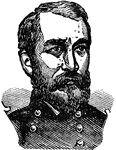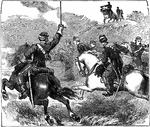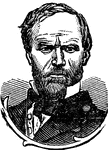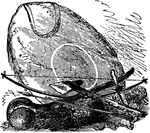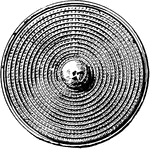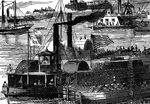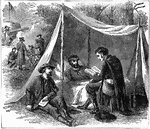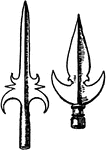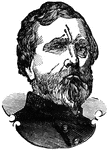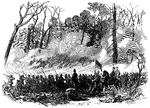
Battle of Shiloh
"Battle of Shiloh, or Pittsburg Landing, left wing- the woods on fire during the engagement of Sunday,…

Battle of Shiloh
"Battle of Shiloh, or Pittsburg Landing, left wing- the woods on fire during the engagement of Sunday,…
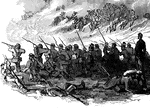
Battle of Shiloh
"Battle of Shiloh, or Pittsburg Landing, left wing- the woods on fire during the engagement of Sunday,…

Ship Island
"Ship Island, near the mouth of the Mississippi- United States war steamer "Mississippi" firing on a…
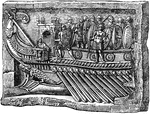
Prow of a Roman War Ship
"The representation shows the arrangement of the tiers or oars in a two-banked ship. In just what way…
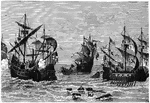
Spanish & English Ships with Sails at War
An illustration of Spanish and English ships with sails at war.
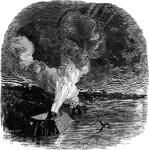
Siege of Island
"Siege of Island No. 10, on the Mississippi River- night bombardment by the Federal mortar boats, ten…

The Sixth regiment
Thousands of patriotic citizens filled every available space in the big railroad station in Jersey City…
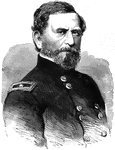
J. T. Sprague
"General J. T. Sprague, born in Newburyport, Mass., July 3rd, 1810, died in New York city, September…

State Prisoners at Fort Lafayette
"Landing state prisoners at Fort Lafayette, New York harbor, in 1861. Fort Lafayette, New York harbor,…
Strasburg
"Reconnoissance of the Confederate poistion at Strasburg, VA., by a detachment of cavalry under General…

Strasburg Lookout
"View of the town of Strasburg, valley of the Shenandoah, occupied by the Federal forces under General…

Bridge at Strasburg
"View of the town of Strasburg, valley of the Shenandoah, occupied by the Federal forces under General…

View of Strasburg
"View of the town of Strasburg, valley of the Shenandoah, occupied by the Federal forces under General…

Strasburg Woods
"In the Shenandoah Valley- General Fremont's division marching through the woods to attack the Confederates.…
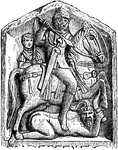
Sueve and Roman Rider
A Roman rider battling a Sueve. Suevi were Germanic people that posed a threat to the Romans.
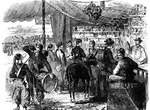
Sutler's Store
"A sutler's store, Harper's Ferry, Va. The sutler's store at Harper's Ferry represents one of those…
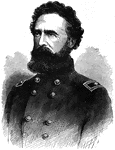
George Sykes
"General George Sykes, born in Dover, Del., October 9th, 1822, died in Brownsville, Texas, February…
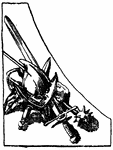
Left War Symbol
The left war symbol has a border made of a copper plate engraving, designed by Heinrich Goltzius (1558-1617).

Right War Symbol
The right war symbol has a border made of a copper plate engraving, designed by Heinrich Goltzius (1558-1617).
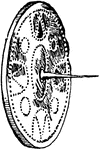
Highland targe
"The targe of the Scottish Highlands, composed of wood and leather, and studded with brass decoratively…

Major Taylor
"Escorting Major Taylor, of New Orleans, the bearer of a flag of truce, blindfolded, to the Confederate…

The Battle of Constantine
From a Fresco in the " Sala di Constantino, " in the Vatican, Rome. The scene is laid on the left bank…
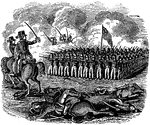
They Conquer Who Endure
"In close array, this firm united band / Guarded on every point will boldly stand; / Their foes attack…
!["General Lorenzo Thomas, born in Newcastle, Del., October 26th, 1804, died in Washington, D. C., March 2nd, 1875, was graduated from the United States Military Academy in 1823; served in the Florida and Mexican Wars, and received the brevet of lieutenant colonel for gallantry at Monterey. On the 7th of May, 1861, he was brevetted brigadier general, and made adjutant general of the army on August 3rd, with the full rank of brigadier general. He served until 1863, when he was intrusted for two years with the organization of [African American] troops in the Southern States. He was brevetted major general, United States Army, on March 13th, 1865. He was retired in 1869." — Frank Leslie, 1896](https://etc.usf.edu/clipart/11000/11059/thomas_11059_mth.gif)
Lorenzo Thomas
"General Lorenzo Thomas, born in Newcastle, Del., October 26th, 1804, died in Washington, D. C., March…

Fort Thompson
"View of New Berne, N. C., from the interior of Fort Thompson after its capture by the Federal forces-…
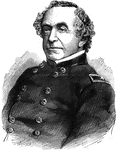
General Joseph G. Totten
"General Totten, born in New Haven, Conn., August 23rd, 1788, died in Washington, D. C., April 23rd,…
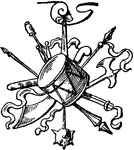
Chased Metal Dish Trophy
This chased metal dish trophy was designed during the Renaissance. Trophies were tokens of victory that…

Chased Metal Dish Trophy
This chased metal dish trophy was designed during the Renaissance. Trophies were tokens of victory that…
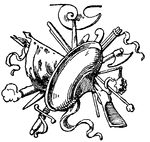
Chased Metal Dish Trophy
This chased metal dish trophy during the Renaissance. Trophies were tokens of victory that were used…
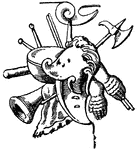
Chased Metal Armor Dish Trophy
This chased metal armor dish trophy during the Renaissance. Trophies were tokens of victory that were…
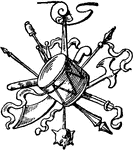
Chased Metal Art Trophy
This chased metal art trophy during the Renaissance. Trophies were tokens of victory that were used…
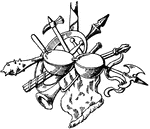
Chased Metal Tool Trophy
This chased metal tool trophy was designed during the Renaissance. Trophies were tokens of victory that…

The Trumpeter's Horse
"The Trumpeter's Horse. From the painting by Horace Vernet, in the Hertford Collection, London." -Rees,…
